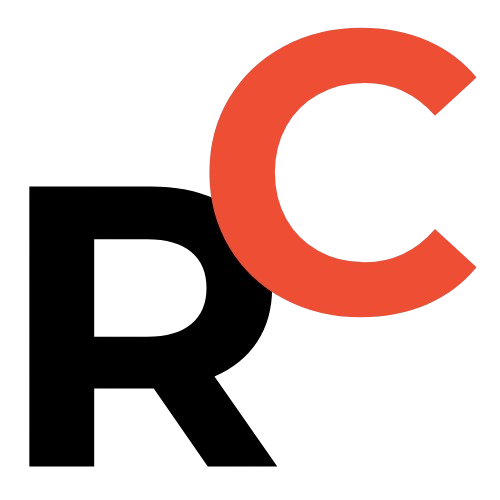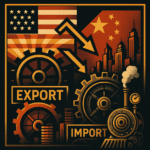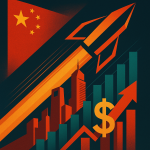Key Points
- Sinocare Medical’s Breakthrough: Its subsidiary SinoShenchang (赛诺神畅) received FDA Breakthrough Device Designation for two ICAS (Intracranial Atherosclerotic Stenosis) treatment devices, marking the first global recognition for such devices by the U.S. FDA.
- Export Growth: China’s medical device exports reached ¥140.308 billion RMB ($19.46 billion USD) in 2024 (7.3% YOY increase) and ¥69.26 billion RMB ($9.60 billion USD) in Q1 2025 (5.03% YOY increase), indicating a significant surge.
- Policy Support: The Chinese government is actively promoting exports through reforms in regulation, expanding export certificates, and fostering international cooperation with organizations like the WHO and “Belt and Road” countries.
- Investment Opportunities: Analysts predict high growth in the international business of Chinese medtech companies in 2025 due to accelerated internationalization, particularly in high-value consumables, In Vitro Diagnostics (IVD), and medical equipment segments as policies shift focus from lowest price to quality and clinical needs.

Looks like China’s medical device exports are officially having a moment.
While innovative Chinese drugs have been grabbing international headlines, the medical device sector has been quietly building momentum backstage.
Now, it’s stepping into the spotlight.
The Game-Changer: Sinocare Medical Scores FDA Breakthrough Status
This week, the market got a jolt of good news from Sinocare Medical (Saini Nuo Yiliao 赛诺医疗), a domestic cerebrovascular device company.
And it’s a big deal.
Two groundbreaking products developed by its subsidiary, SinoShenchang (Sai Nuo Shen Chang 赛诺神畅), just got the green light from the U.S. FDA.
- The COMETIU self-expanding intracranial drug-eluting stent system
- The COMEX balloon microcatheter
Both were jointly granted Breakthrough Device Designation by the FDA, setting a massive new benchmark for Chinese medtech innovation.
Essentially, getting into the FDA’s “green channel” is like getting a VIP pass. It means “accelerated privileges” that help products get to market faster and lock in a serious competitive edge.
The market reacted instantly. Sinocare Medical’s stock shot up, hitting the 20% limit-up cap for two consecutive days.
But the real story here is the historical significance. These are the first-ever devices for treating ICAS (Intracranial Atherosclerotic Stenosis) to be recognized by the U.S. FDA globally.
They’re designed to:
- Promote vascular endothelial healing
- Reduce post-surgery risks
- Ensure zero neurotoxicity
This could be a lifeline for millions of stroke patients worldwide who previously lacked ideal treatment options due to tech limitations.
Just a year ago, Sun Jianhua (Sun Jianhua 孙箭华), Chairman of Sinocare Medical, said: “China can produce original products; we are not just absorbing and learning from others, but we can also help others.”
Turns out, that wasn’t just talk. It was a prophecy.

Resume Captain
Your AI Career Toolkit:
- AI Resume Optimization
- Custom Cover Letters
- LinkedIn Profile Boost
- Interview Question Prep
- Salary Negotiation Agent

Beyond the Hype: The Data Backing China’s Medtech Export Surge
The global market isn’t just listening; it’s putting its money where its mouth is.
The numbers speak for themselves:
- 2024 Total Exports: ¥140.308 billion RMB ($19.46 billion USD), a 7.3% year-over-year increase.
- Q1 2025 Exports: ¥69.26 billion RMB ($9.60 billion USD), a 5.03% year-over-year increase.
A recent Frost & Sullivan report confirms the trend, pointing to a clear upward trajectory. Chinese medtech companies are ramping up R&D investment to boost the tech and quality of their products, aiming squarely at high-end international markets.
As analysts at Golden Credit Securities (Guojin Zhengquan 国金证券) put it, leading Chinese medtech companies are seeing their overseas revenue grow rapidly.
The takeaway? With strong policy support, companies expanding their own brands internationally are set to accelerate even faster.

It’s No Accident: How Chinese Policy is Fueling the Fire
This isn’t happening in a vacuum. The trend of domestic medical device exports has been building for a while, backed by strategic government moves.
Late last year, the General Office of the State Council laid the groundwork with a clear directive to deepen reforms in drug and medical device regulation.
The goals were explicit:
- Accelerate progress in joining the Pharmaceutical Inspection Co-operation Scheme (PIC/S).
- Expand the issuing of export sales certificates to all qualified manufacturers following Good Manufacturing Practices (GMP).
Today, the National Healthcare Security Administration (Guojia Yibao Ju 国家医保局) is doubling down on this vision.
It has inked a cooperation agreement with the World Health Organization (WHO) to share China’s unique medical insurance system experience with the world.
Even more, it’s encouraging the creation of global drug and device trading platforms aimed at Southeast Asia, Central Asia, and other “Belt and Road” countries.
The message is clear: help more and better Chinese pharmaceutical products go global.
- Deepen reforms in drug and medical device regulation.
- Accelerate progress in joining PIC/S.
- Expand export sales certificates for GMP-compliant manufacturers.
- Cooperation agreement with WHO to share medical insurance system experience.
- Encourage creation of global drug and device trading platforms (e.g., for “Belt and Road” countries).

Find Top Talent on China's Leading Networks
- Post Across China's Job Sites from $299 / role, or
- Hire Our Recruiting Pros from $799 / role
- Qualified Candidate Bundles
- Lower Hiring Costs by 80%+
- Expert Team Since 2014
Your First Job Post

The Investor’s Playbook: Where to Find Alpha in China’s Medtech Sector
So, where are the investment opportunities?
According to China Securities Investment (Zhongxin Jian Tou 中信建投), the biggest growth driver is internationalization.
They predict many Chinese medtech companies will see high growth in their international business in 2025, leading to a potential re-evaluation of their valuations.
Here’s a breakdown by segment:
High-Value Consumables: Post-Procurement Plays
The key variable here has been “centralized procurement” and the resulting price drops.
Most major categories, like coronary stents and orthopedics, have already gone through this process.
- Short-Term Drivers: Domestic substitution and higher adoption rates thanks to lower procurement prices.
- Long-Term Drivers: International expansion and developing new product categories.
In Vitro Diagnostics (IVD): Quality Over Price
The focus is shifting to clinical needs.
As centralized procurement policies get refined, the old “lowest price takes all” model is on its way out.
Future IVD procurement will prioritize clinical needs and product quality.
This is great news for leading IVD companies with high-quality products and strong economies of scale.
Medical Equipment: A Quarter-by-Quarter Comeback
This segment is improving steadily.
Centralized bidding is also moving past the “lowest price wins” mentality, and prices are expected to stabilize.
With better bidding environments, performance is set to improve.
- Q2 2025: Some companies expected to see performance improve.
- Q3 2025: Most companies expected to see improvement.
The combination of homegrown innovation, rock-solid data, and powerful government support creates a powerful tailwind for the future of China’s medical device exports.
- Overall Driver: Internationalization, leading to potential re-evaluation of valuations.
- High-Value Consumables: Focus on long-term drivers like international expansion and new product categories, post-centralized procurement.
- In Vitro Diagnostics (IVD): Shift towards prioritizing clinical needs and product quality over lowest price, benefiting high-quality companies.
- Medical Equipment: Expected steady improvement with stabilizing prices and better bidding environments; performance improvement anticipated in Q2 and Q3 2025.





